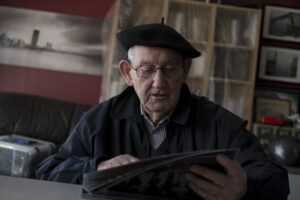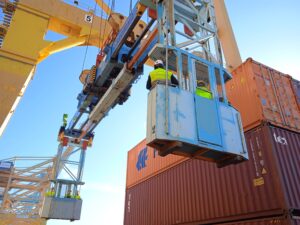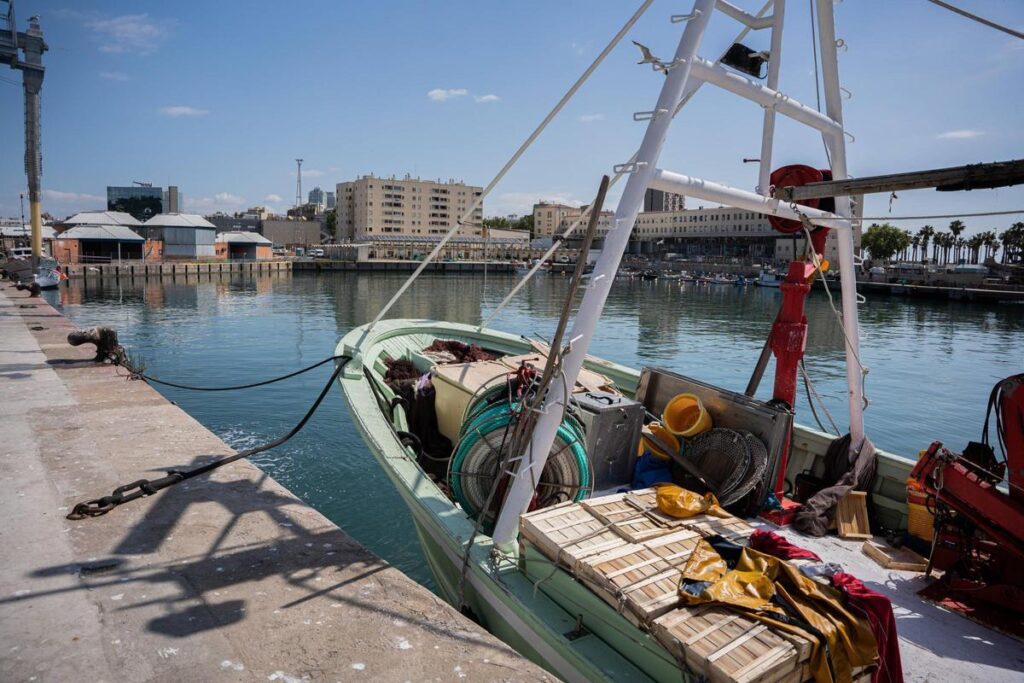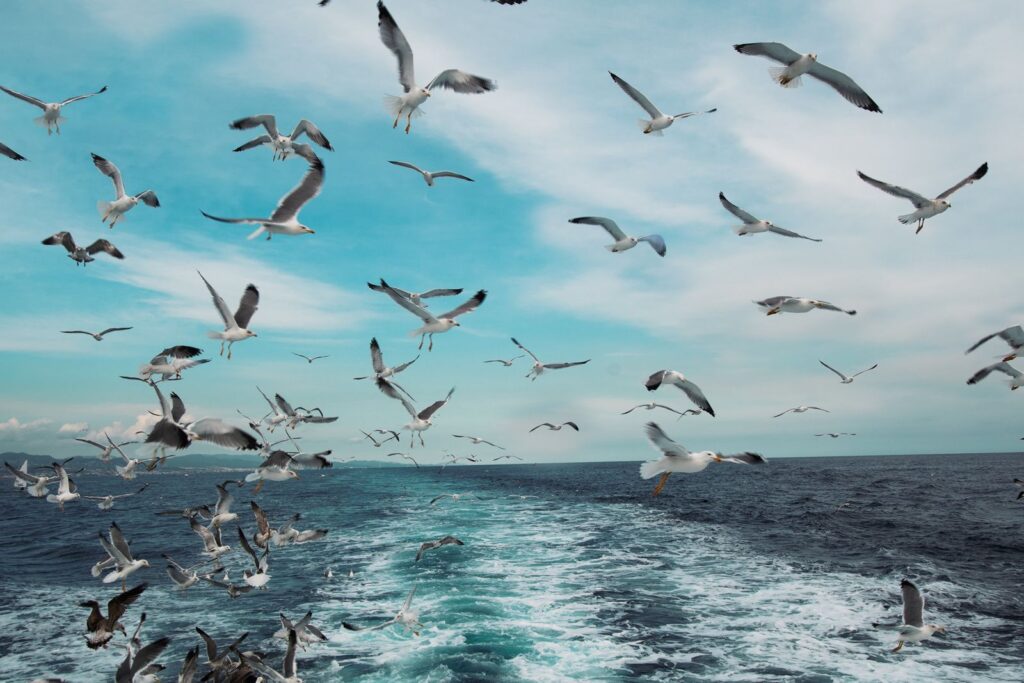Being more from the neighborhood than you are, is impossible.
Five generations of my family on my mother’s side – with the exception of my great-grandparents – who came from Peniscola In the mid-1800s, were born, lived and worked in this neighborhood, always dedicating ourselves to fishing.
Like a good kid from the neighborhood, a bad student but with exaggerated curiosity.
During my childhood, I was a hyperactive child, I think I still am. I have always felt great curiosity about everything that happens around me. I have an enormous capacity to learn, but I am unable to do so through the efforts of the teachers who insist on teaching me. My educators failed in their obstinacy to make me a profitable man. Poor failures. I finished high school copying – back then it was customary among the smartest people in the neighborhood – and I started working in the workshop – I was good at manual work – and I started studying industrial master’s degrees – at night – at La Salle.
40 years as a forger.
In my case I had to follow my father’s trade, forger, -Herrería de Ribera-. My job consisted of doing repair and maintenance of all types of boats: fishing boats, pleasure boats, yachts, work on merchant ships, shipping agents, and also R&D programs for the Institute of Marine Sciences. My company was called “Forner Oceanic ”.
Apart from the jobs that provided me with maintenance, I carried out other activities linked to my job that, although they did not produce benefits, satisfied my artistic desires, and allowed me to unleash my creativity.
Iron sculpture was my first step, I learned the art of forging from Juan Cortés Trijero Andalusian fisherman from Castell de Ferro, who worked in the workshop for 20 years every morning, combining it with night-time hoop fishing. An unforgettable person for me. Family of ” tinkerers” gypsies – Quinquis- . From him I learned how to forge iron and respect the collective. He was illiterate but a well of wisdom. He showed me through a thousand sayings that “Intellectual” is not synonym of “intelligent.”
Always with creative concerns.
As I told you – always combining it with my work – I started with iron sculptures, later I built a fiberglass sailboat 8 meters long. It took me 2 years and I sailed with it for 3 years, then I sold it.
In 1990, the City Council expropriated my workshop to build a plaza and I started working in the Lighthouse. You directed the metallurgy section, teaching kids between 16 and 22 years old with problems of social adaptation. At first it was difficult, but slowly it became very rewarding. There I learned a lot about the human condition and social injustice. I also discovered that my inability to learn was far outweighed by my ability to teach.
Writer and photographer.
I have always been fond of stories and photography. My professional activities, always within the port, allowed me to do reports on the work of the shipyards, tugboats, pilots, etc. In those days I had a Leica M6. In 1998 I made a series of photographs of an accident that occurred in the Moll de Catalunya in which a merchant ship sank several ships. It was my first publication in the press, it had the cover in El País, La Vanguardia, and El Periódico. I entered the world of photojournalism through the front door.
From this moment on, driven by vanity, photography became one of my priorities. I set up a studio in front of the Plaza de Mar, and a small black and white developing laboratory.
My hobby of writing stories comes from my addiction to reading since I was a child. First with comedians, then I made the jump to novel stories, and to this day I have not been able to put it down. I am addicted. Reading and writing have become an obsession against which I have lost all battles.
The secret is to see what others don’t see, then you just have to capture it with a photo, with a writing.
In 2000, cancer made me unable to continue working in the forge, from then on I dedicated myself only to writing and photographing. I became a kind of chronicler of the neighborhood. From time to time I published, in El Periódico, El País or La Vanguardia, as a freelancer. I made good friends in the world of the press, who continue to be friends today.
When you are fighting the disease you are limited in any activity. In my case, chemotherapy only allowed me to walk through the streets, on the beach, also around the port, and observe people. I became curious, and I learned to listen to people and above all to question, to look for answers and find a way to change things, contributing my grain of sand to help build, together, a better and fairer neighborhood.
In 2016, I was awarded the medal of honor from the city of Barcelona for this work. Unanimously, all parties agreed that I deserved this award. At first, when they told me about it, I thought it was a joke. It was the first time in my entire life that I received a tribute and it was Mayor Ada Colau who was in charge of hanging the medal on me.
What you are is a shameless neighborhood scoundrel who is not satisfied with mere observation. You dare to let your imagination fly over the person you are observing without asking permission.
Sometimes I take this liberty. It is dangerous to photograph or write about people in the neighborhood without asking permission. Barceloneta is my home, people know me, and have accepted that I am the neighborhood photographer. I give away many photos to the neighbors, and I cover all the traditional events and festivals – which are not few -, I never charge anything, my neighbors are my friends. Every year I make a free 15-page calendar that pharmacies distribute to neighborhood customers, everyone has their neighborhood image calendar for the current year. It is a job that costs me money and effort, but I am very happy about it. People thank me and I am proud of this recognition.
From this magazine we attest to your collaboration, as altruistic as it is valuable to us.
You have numerous press covers in which you show what the neighborhood has become. Is it more complaint or nostalgia?
It can’t be nostalgia, I don’t think about the past. After going through cancer twice, two heart attacks and a stroke , I only worry about the present, I live it furiously day by day and, as you will understand, I don’t even consider the future.
Always committed to your environment, to your people.
To death with my neighbors as far as necessary. Barceloneta has been fighting for its survival for years. All of us here have a common goal: to preserve the respect that we have earned during all these years of sweat and fight against injustice and contempt on the part of the institutions.
There was a time when the city looked at us with contempt. The reputation of being an old, violent, dangerous, dirty, noisy neighborhood, inhabited by bad people, kept us isolated from the greater Barcelona. This bad reputation favored us. For years they left us alone. Today everyone has their eyes on this corner of a city that has just discovered the sea, good food and the kindness of its people. It is a neighborhood to live in, and for this reason it is in the sights of speculators, real estate agents and progressive posh people, hungry for affection, – especially foreigners – who do not mind paying exorbitant rents to live here.
At this rate it will no longer be your neighborhood.
Barceloneta will always be my neighborhood, I carry it within me just like all the neighbors born here, and also those who have arrived from all over the world and have integrated into this small universe of narrow streets between the port and the beach. A neighborhood that earned the nickname of La Ostia for reasons that we all recognize. There is no doubt that Barceloneta has changed, as have its people – all immigrants. In its 270 years of existence, it has not stopped evolving. Many entities are bothered by these changes, others not so much, but it is clear that the city is moving towards a future in which we will have no place if we stay behind.
Well, we will have to move forward.
La Barceloneta is a neighborhood that makes you fall in love. We natives, of course, would defend our neighborhood with our lives if necessary. But what is it about this neighborhood that makes visitors feel attracted to this small plot conquered in the sea? Maybe they will find here the one that was lost in its place of origin. Values such as neighborhood solidarity, being aware of the problems of your community, communication. Here you can still sit on the terrace of a bar and end up sharing a conversation with the adjacent tables as if they had known you all your life. It is a feeling that you will never be alone and that, over time, when referring to you they will say “he is from the neighborhood”, no matter the origin, the language, or the purchasing power. That’s what this neighborhood is like.
As Francisco Umbral said: do you want to talk about your book?
In 2011 I started writing a book about the history of my neighborhood, Barceloneta. I talk about its history, that of its inhabitants, character, origin, customs, endearing stories, anecdotes, relevant events, and eternal characters that endure in our memory. In 2013 I published it and it was a great success. I made 4 editions, they sold it to the Negra y Criminal bookstore by Montse and Paco Camarasa – who encouraged me in its publication – and also to La Garba .
I did not allow it to be sold outside the neighborhood despite requests from other bookstores in Barcelona. They were our stories, and I have always believed that no one cares about them. Only the people of La Ostia can understand them. I have to say that writing my book gave me moments of happiness that have not been repeated since its publication. The book is a compilation of stories full of irony that the natives know, because they lived them and visitors will find it difficult to believe that they are not science fiction.
And your beloved Diari de la Barceloneta.
A few years before I had contacted Ester Marín, the owner of the Diari de la Barceloneta, I offered her my collaboration and she was delighted to accept. El Diari was a monthly publication of the most relevant news that happened in our neighborhood. For a few years I enjoyed publishing photographs, opinion pieces and news. Ester was a person committed to the work of informing the neighbors. But the Diari de la Barceloneta had a very big defect: one that its director, despite my advice, refused to correct. It was an impartial newspaper, which did not allow itself to be influenced, much less pressured by anyone, and the press paid dearly for this. After 20 years of uninterrupted monthly publications, the Diari de la Barceloneta disappeared due to the machinations of the tactical powers of our neighborhood in cahoots with some neighborhood platforms.
A message.
I tell the residents of this wonderful neighborhood that Barceloneta is not only a neighborhood, it is “an idea” and ideas cannot be killed. It will still be here from today in 100 years. And since we are a seafaring neighborhood, instead of a message, we will launch a warning for sailors: uncivil speculator tourist apartments, La Barceloneta is not for sale.
So good wind and new boat.









